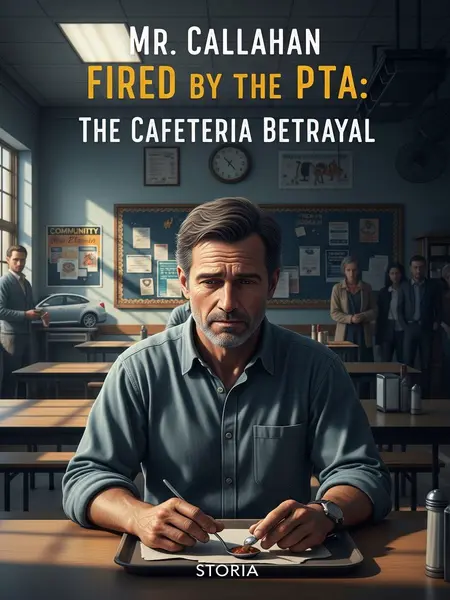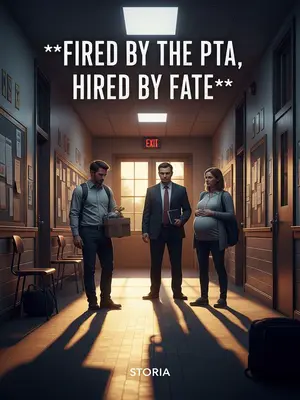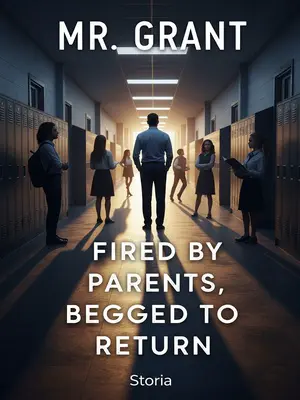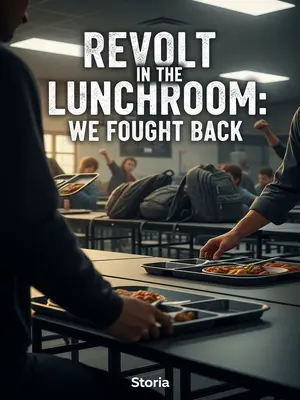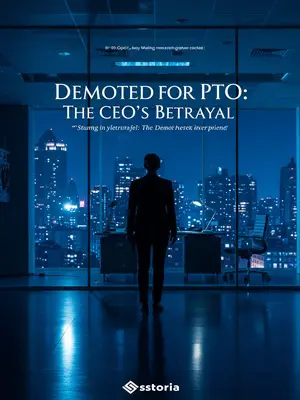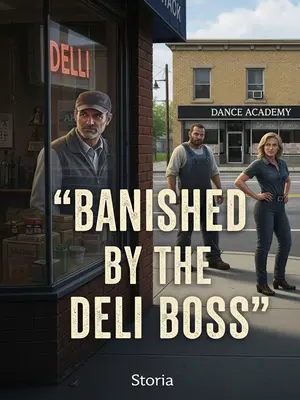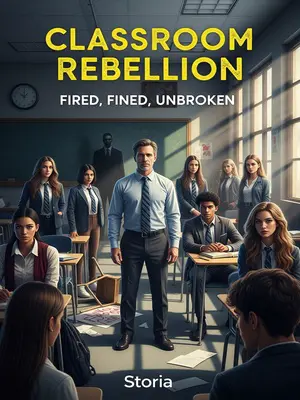Chapter 2: An Invitation with Strings Attached
Maple Heights Academy’s tenth anniversary celebration was coming up, and as the guy who’d run the cafeteria for years, I got an invite. Maple Heights never did anything small—red, white, and blue banners flapped in the early October breeze, balloons bobbed on the flagpole, and the school band’s warmup echoed through the gym. My name was printed on the invitation, all formal, though I knew it was more duty than genuine appreciation.
Truthfully, I had no interest in these events. I’d done my time on hard folding chairs, made awkward small talk with parents who couldn’t remember my name, and sat through enough “thank you for your service” speeches to last two lifetimes. Not my scene.
I could already see it: kids in matching polos singing too loud, parents smiling politely while scrolling their phones, teachers handing out programs. I’d be stuck there, nodding along, counting the minutes until I could sneak out.
But Principal Williams wouldn’t let up—late-night voicemails, guilt-laden texts: "You’re part of this place, Mr. Callahan. The kids ask about you. Come on, just this once." He wore me down. I found a clean shirt and promised myself I’d leave as soon as I could.
I made it through the students’ performances and was halfway to the exit when Williams caught me, blocking the door with his best “just one more favor” look.
He told me a parent rep wanted to tour the cafeteria for lunch, and as the contractor, I needed to be there. I tried not to groan. Another round of parent inspections, another set of loaded questions. I forced a smile. That’s the job.
I figured it was just for show. Been through this dance before—tour the kitchen, show off the clean counters, let them sample the menu. I expected to be in and out within the hour.
Maple Heights Academy is a private elementary school—a chain, actually. Tuition checks clear fast, and everyone has an opinion about organic carrots versus canned beans. Pressure’s always on to keep up appearances.
Ten years ago, a new campus went up in Silver Hollow. Now, after years of steady growth, it’s the pride of the neighborhood—tree-lined streets, Little League banners, and all the gossip at book club. Maple Heights is where parents want their kids.
“Dear parents, up ahead is our Maple Heights Academy cafeteria, also one of the city’s top ten model school cafeterias.”
Principal Williams was in full tour-guide mode, hands clasped behind his back, walking backwards as he addressed the group. He loved showing off the shiny steel appliances, the smell of fresh bread wafting through the air. His pride was obvious.
“Ensuring children eat healthily, hygienically, and safely has always been the school’s principle.”
He gestured at the lunch line, staff in crisp uniforms, everything staged just so. It looked like a magazine spread.
“We have very strict requirements for hygiene, staff procedures, and sourcing of ingredients.”
He wasn’t exaggerating. Every delivery checked twice, thermometers taped to every fridge, surprise inspections every week.
Principal Williams introduced me to the crowd of parents. Moms in yoga pants scrolled through their phones, dads in khakis glanced at their watches, and a couple of grandmas came armed with purses full of Werther’s Originals. All trying to look unimpressed while sneaking glances at the dessert bar.
"Mr. Callahan is the contractor of our school cafeteria. If parents have any suggestions or questions, you can ask him directly."
The spotlight swung my way. I straightened my collar and tried to look approachable, even as my stomach knotted. Showtime.
Williams nudged me forward, and suddenly everyone’s eyes were on me. I pasted on my best customer-service smile.
"Mr. Callahan, can the cafeteria’s hygiene standards really be met?" A mom with a notebook at the ready—definitely the type who brings her own sanitizer to bake sales—asked sharply.
"Absolutely. We disinfect twice a day, morning and evening, with staff assigned to each area. No stains, no hidden corners." I met her gaze, determined to answer straight.
"Mr. Callahan, do all cafeteria staff have health certificates?" A dad in a suit chimed in, more concerned about liability than lunch.
"All staff, including cleaning crew, are certified. We keep the binder in the kitchen office—up to date, every semester."
Once the first questions started, the rest followed like clockwork. What oil do you use? How often do you change the fryers? Is the milk organic? Are there gluten-free options? I fielded each one, tossing in a joke about kids only eating broccoli if it’s covered in cheese.
Someone even asked for a full nutritional breakdown. I almost wished I’d brought PowerPoint slides.
Unable to answer everyone at once, I waved toward the serving line. "Why not take a look yourselves? Taste the food. I think you’ll find your own answers."
The cafeteria was bigger than most town halls—linoleum floors, faded banners from last year’s spelling bee, and the faint smell of cinnamon rolls from breakfast lingering in the air. Three stories tall, over sixty-five thousand square feet, seating for four thousand. The hum of dishwashers, the clang of pans, the buzz of kids’ voices—it was the heartbeat of the school.
The first floor held the kitchen, storage, and staff dining. The upper floors were for students. As soon as you entered, the place gleamed. That shine came from hours of after-school scrubbing and a team that cared.
All cafeteria staff wore uniforms, masks, and gloves—hair tucked up, gloves snapped tight, ready to serve. Many had kids in the district themselves. There were three serving windows: main dishes, meats, and veggies. Lines moved fast. Even picky eaters could find something to like.
Everyone got the same meal standard: three meats, two veggies, one soup, one main. No favorites, no special treatment. The menu was posted in the lobby, designed by a local nutritionist, Dr. Kendra Evans. Bright, colorful, and different every day. No repeated dishes—nutrition guaranteed.
The parents toured first, checking every corner. By the time they finished, some of the tension had drained from their faces.
Principal Williams led them to the line. Trays slid down the rail, servers ladled out portions, and soon everyone was settled at the long tables.
"The chef’s skills are pretty good. This tastes nice."
"This fish has been marinated—very flavorful."
"The veggies are so fresh. If my kid can eat this every day, I’m happy."
Forks clinked, a soft hum of approval spread. Some parents snapped photos, grinning for the family group chat. But just as the compliments started, someone decided to stir the pot.
"Just this, and you have the nerve to charge eight hundred a month?" A middle-aged man tapped his tray with his fork, voice dripping with sarcasm.
